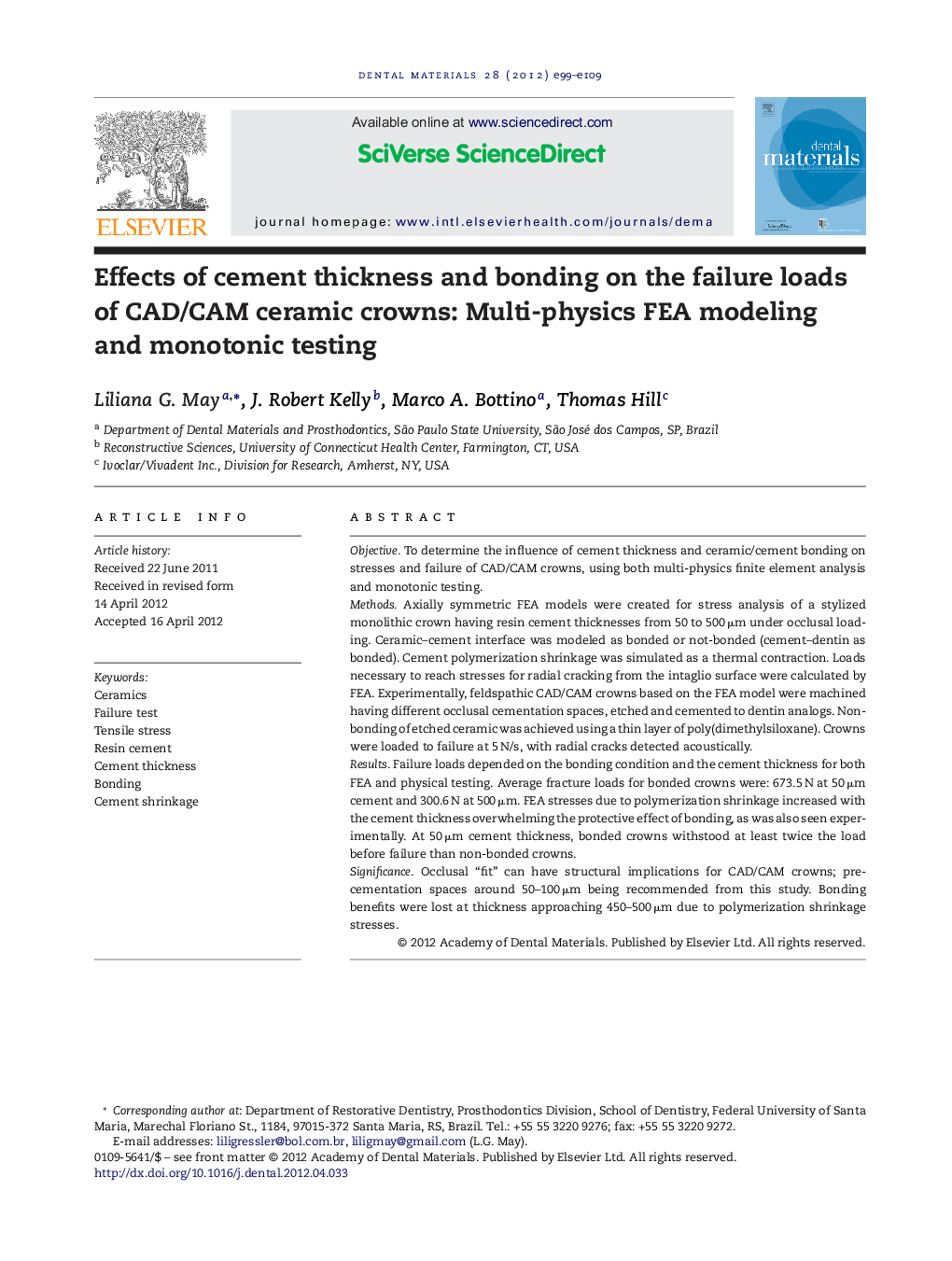| کد مقاله | کد نشریه | سال انتشار | مقاله انگلیسی | نسخه تمام متن |
|---|---|---|---|---|
| 1421372 | 986407 | 2012 | 11 صفحه PDF | دانلود رایگان |

ObjectiveTo determine the influence of cement thickness and ceramic/cement bonding on stresses and failure of CAD/CAM crowns, using both multi-physics finite element analysis and monotonic testing.MethodsAxially symmetric FEA models were created for stress analysis of a stylized monolithic crown having resin cement thicknesses from 50 to 500 μm under occlusal loading. Ceramic–cement interface was modeled as bonded or not-bonded (cement–dentin as bonded). Cement polymerization shrinkage was simulated as a thermal contraction. Loads necessary to reach stresses for radial cracking from the intaglio surface were calculated by FEA. Experimentally, feldspathic CAD/CAM crowns based on the FEA model were machined having different occlusal cementation spaces, etched and cemented to dentin analogs. Non-bonding of etched ceramic was achieved using a thin layer of poly(dimethylsiloxane). Crowns were loaded to failure at 5 N/s, with radial cracks detected acoustically.ResultsFailure loads depended on the bonding condition and the cement thickness for both FEA and physical testing. Average fracture loads for bonded crowns were: 673.5 N at 50 μm cement and 300.6 N at 500 μm. FEA stresses due to polymerization shrinkage increased with the cement thickness overwhelming the protective effect of bonding, as was also seen experimentally. At 50 μm cement thickness, bonded crowns withstood at least twice the load before failure than non-bonded crowns.SignificanceOcclusal “fit” can have structural implications for CAD/CAM crowns; pre-cementation spaces around 50–100 μm being recommended from this study. Bonding benefits were lost at thickness approaching 450–500 μm due to polymerization shrinkage stresses.
Journal: Dental Materials - Volume 28, Issue 8, August 2012, Pages e99–e109